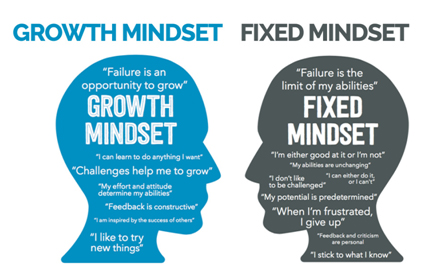
A Definitive Guide to Leadership Development Programs

The purpose of Leadership Development Programs is simple: to nurture and build strong leaders who can build a strong and sustainable future.
Here is a deep dive into what LDPs are all about:
Table of Contents
– Why do you need to invest in a LDP?– Key Steps to keep in mind while planning a LDP
– How leaders grow
– 12 Pointers for designing the perfect LDP
– Principles to keep in mind while designing a Leadership Development Program
– What are the most common leadership challenges all over the world?
– 10 Reasons why LDPs fail (and what to do about that)
– Can LDPs be run virtually?
– A few trends in LDP design
– Case Studies of Corporate Leadership Development Programs
– Resources
– Conclusion
– Download the Definitive Guide to Leadership Development Programs
Why do you need to invest in a LDP?
1. Boosts organisational performance
Take an example of HUL often referred to as the “Factory for Leaders.” The company has cultivated this leadership factory with care and churned out leaders relentlessly. The company invests in a Business Leadership Trainee (BLT) program every year under which trainees spend 15 months learning the ropes of managing large operations and interacting with customers. They have a compulsory, four-week rural stint where they spend time understanding the rural customer. The results are for all to see. HUL has always outperformed its rivals in terms of performance.
2. Drive strategy execution
In a VUCA world, organizations can no longer afford development for development’s sake. They need a leadership strategy that closely connects with the business strategy and equips employees with the leadership skills need to implement it. When done right, a leadership development program can greatly aid in strategy execution.
3. Helps attract and retain fresh talent
An inspired leadership in your company will help you attract more talented individuals. Prospective job candidates identify the potential your company has and the growth opportunities they can receive in the company and strive to work in a thriving environment.In HUL for instance: It’s no surprise, that the average attrition rate is at 5% — much lower than the FMCG average of 18%.
4. Encourages Innovation
Empowered and inspired leaders bring fresh ideas and execution strategies to the table. Leaders who can challenge the status quo help a company not only make more sales and generate a higher revenue but also find new paths where none existed earlier.
Key steps to keep in mind while planning a LDP

If you are not clear on why you need a Leadership Development Program, putting one in place would serve no real purpose. Identify and understand what you’re trying to achieve with such a program. If your goal is to establish a solid position in the market, you might want to train your employees accordingly. If it is to make certain acquisitions, your focus in the LDP would be different. Whatever be the goal, it is important that you list it out in the first place.
2. Identify the right candidates
Putting your entire workforce through a Leadership Development Program is not a good idea. There are many employees who might not be ready to undergo such training. This would not only be a waste of resources, everyone’s time, but also a lot of money.
Instead, identify the candidates who you think are ready to undergo the program. You don’t necessarily need a formal testing or assessment system in place to do this. In fact, informal methods may work better. Ask senior managers of multiple teams if they’d like to nominate someone. Even sitting through a regular team meeting can help you identify future leaders.
3. Identify high-priority departments
You might not need to have a LDP for every function or division of your organization at the same time. Every division and every function in an organization generally has its own sub-culture and its own unique challenges. Identify divisions, departments or functions in your organisation that are fertile for a LDP – where you feel an intervention can make a tangible difference. Focus on these departments first and then move on to other departments that need attention.
4. Design an engaging learning journey
Once everything is in place and you are now looking to begin a Leadership Development Program, ensure that enough thought is put on how you design it, so that there is a right mix of learning, practicing and coaching in the learning journey. A detailed note on “The 12 Pointers to design the perfect LDP” is mentioned ahead. Follow it closely.
5. Use real-world examples and case studies
Using the same strategies like the ones used in schools won’t work for your Leadership Development Programs. You must add learning elements that are from the real-world, relevant to your industry and market, and the insights from which can be applied directly in the workplace. The LDP needs to surface actionable insights and tips which participants can use to lead your business in a better direction.
6. Make space for group coaching and cross-functional assignments
Leaders thrive in a collaborative environment. Plus, they need to be able to share their insights and opinions and work with different teams at different levels. This makes their learning and their outlook to the business broad-based and not limited only to their narrow areas of expertise. When done with participants from multiple teams, group coaching and cross-functional assignments can significantly boost organizational maturity.
7. Provide for microlearning capsules
True learning does not happen with a one-off intervention. Macro learning interventions need to be complemented with micro learning interventions too. Repetitions and reminders are essential for learning to seep in and anchor itself. This is why microlearning elements, delivered through a cell phone is auseful component of a Leadership Development journey.
How leaders grow
Leadership like any other skill is something that is gradually learnt. While approaching a LDP design, it is important to hence keep in mind at what skill level individual leaders are currently at so that the LDP can help them to cultivate skills accordingly. One lens to view this is through the impact and influence of leadership at different levels.
Hence ask yourself, at what level should this LDP be pegged at? Remember, it can be at more than one of these levels.
Level 1: Personal Leadership
Leadership doesn’t require a tag or designation. Leadership is for everyone. An individual is called a leader when they take the initiative, collaborate, and get the work done. Therefore, leadership begins with each individual. A leader will give far more to the organization than they take via their contributions and support.
Level 2: Team Leadership
The next level leadership is team leadership, where a leader is required to extend their impact beyond their personal domain. When a leader reaches this stage, this is when their influence becomes additive. The goal is to determine the strengths of every team member and how to combine them to bring about a shared focus and vision on results. It is no longer about individual performance only – but about how well the team performs.
Level 3: Organizational Leadership
Organizational leadership is the next phase of leadership where an individual’s influence becomes multiplied, creating new organizational capabilities to drive vital outcomes. Organizational leadership means having the foresight to bring in the right leaders and teams together, a vision for where the organizational unit needs to go, and the capability to channel their talent, energy, and passion towards a mutual organizational goal.
Level 4: Enterprise Leadership
Finally, the last phase of leadership is enterprise leadership, where the leader has the highest impact on the organization. In this phase, the leader is capable of bringing cultural impact on the entire organization, including teams and businesses, enabling them to form a vibrant ecosystem.
12 Pointers for designing the perfect LDP
Leadership development is a key priority for almost all companies that we engage with. No surprise there considering that TrainingIndustry.com says that leadership training is a $366 billion global industry.
So what are a few elements to keep in mind while designing your Leadership Development Program (LDP)?
1) Help in creating self-awareness:
To be truly effective, Leaders need to have a good sense of where they stand. Different psychometric tools like MBTI and Emergenetics can play a very useful role in achieving this. For those leading others, a 360 degree feedback often plays a crucial role in identifying areas needing development and even blind spots. Senior leadership development programs can also include how they come across as leaders to others.
2) Understanding how to drive Accountability:
Success for leaders depends on their team’s performance rather than their own. Leaders hence need to be trained on how to define accountability and rigorously hold direct reports to those commitments, so that everyone can succeed and produce the results they need.

3) Knowing how to Lead Change:
We live in turbulent times. Terms like “VUCA” and “Black Swan” have entered the lexicon of everyone in a leadership role. How leaders manage change and lead their teams through these changes is increasingly becoming a sine qua non for Leadership. Ergo your LDP needs to have a component of how to lead change.
4) Understanding Leadership as Influence:
Leaders increasingly work in matrix organizations where they need to influence others without having authority over them. As they scale up the hierarchy, they need to work with other leaders and be adept in the art of subtle negotiations and building relationships. Knowing how to influence others without using authority or hierarchy, and getting things done should hence be a part of your LDP program.
5) Coaching:
While communication is an essential skill that leaders must learn to perfect, talking is not communication. The language of leadership is coaching. Knowing how to connect with people through both their hearts and their minds, and growing them through gentle guidance, questioning and coaching conversations is an essential skill for Leaders today.
6) Communication & Presentation:
Leaders constantly communicate. It happens at all times and in many forms – be it a large presentation, one on one conversations, phone calls, texts, mails and video conferencing. Although it is not a new skill, poor communication can have very bad repercussions. Hence how to present with impact is a key skill that every LDP should include.
While all the above points refer to the content of the LDP, a few points relating to the structure of the intervention, also needs to be kept in mind. The 70-20-10 leadership development model is a good lens to view LDP interventions. Based on 30 years of study of how executives learn to lead, it rests on the belief that leadership is learned through doing. There’s plenty of evidence to support that belief.
As the 70-20-10 name implies, the learning model calls for 70 percent of development to consist of on-the-job learning, supported by 20 percent coaching and mentoring, and 10 percent classroom training. Hence, a few other components that your LDP should include are:
7) Leading a project:
Assigning an important project, assignment or initiative to employees being groomed for leadership is a great way for them to practice increased responsibility and accountability that comes with Leadership. In many ways, it is like a dry run before the real deal. Exposing leaders to real challenges and testing their mettle in real business situations gives learners an opportunity to put into practice everything that they have learnt.

8) Volunteer leadership:
While most leadership skills are learned gradually through life, the learning curve can be accelerated by implementing volunteer leadership development. Look for opportunities to assign learners to an industry or professional organization to build experience influencing others.
9) Exposure to other leaders:
One of the perks of working in Google is that besides being exposed to tech leaders, there are often talks with celebrities and other thought leaders. Why is Google doing this? Strategically exposing leaders to other leaders allows them to discuss, learn and understand the perspectives other leaders bring in when addressing common challenges.
This kind of immersion is one of the most effective innovations in leader development. It breaks the mental model that people carry and opens their mind to other opportunities.
10) Exposure to varied assignments:
A variety of experiences are essential to achieving a balanced development of Leaders. Such experiences that significantly stretch and challenge a leader are also called crucible moments. No classroom experience can provide this kind of learning. It is such authentic challenges and the learning from those experiences that develops leadership in the real sense. Such learning can have a lasting impact on how a person manages and leads.
11) One size doesn’t fit all:
Leaders are needed at every level of an organization right from the entry level to the executive levels. However, make sure that the focus of your Leadership Development Program run for different levels is different. One lens to look at LDPs is through:
• Leading Self
• Leading others
• Leading other leaders
Regardless of which level the LDP is pitched at – it is very important to ensure that it is designed and communicated in a way that seems like it is fun and exciting. It is one of the biggest mistakes organizations make when they assume that senior level programs need to be “serious.” Always remember laughter is no enemy to learning.
12) Clear goals and milestones:
As Lewis Carroll said in the lovable book, Alice in Wonderland, “If you don’t know where you are going any road can take you there.” Don’t design your leadership program as a one-off intervention or as a series of disconnected ones. Each person enrolling for a LDP should be given a sense of embarking on a journey. Leadership development after all is not a destination to be reached but a lifelong endeavour.
Principles to keep in mind for designing a Leadership Development programme
The task of designing a leadership development programme is not easy. There are a few essential things that must be taken into consideration. Here are five principles that must be taken into consideration while designing a leadership development programme –
● Beginning with the End in Mind – It’s essential to have a clear picture of the net outcome of the development programme. It must also have a strategy to achieve the deliverables and a specific time-frame.
● Applied Science Beats Pure Science – For the success of any development programme, it must be simple, practical, and easy to apply on the professional front. It’s always best to design the programme on a model of leadership, a competency model, or a set of core values that would serve as an organizing framework.
● Creating a Narrative Thread – The overall design of the development programme and individual agendas must have a proper flow. An important aspect of a strong presentation is logical transitions between the different segments of the presentation.
● Considering the Audience – For an LDP to be successful, it’s essential to determine the target audience. It needs to be relevant to the audience and must also resonate with what they are looking for. It’s always best to make them understand the opportunities that they will have after completing the program.
● A Multi-Modal Approach – The best way to keep the learners glued to your program is to keep things varied. You can ask your presenters to keep the lectures short and precise so that it doesn’t extend more than seven minutes.
What are the Most Common Leadership Challenges all Over the World?
No matter the industry or organization, leaders across the globe encounter a few similar leadership challenges. The challenges are prevalent at the middle or senior manager level. Here are the top 6 suchleadership challenges that must be kept in mind for managerial development, irrespective of the organization.
● Honing Effectiveness – The challenge to develop relevant skills, including but not limited to time-management, prioritization, strategic thinking, decision-making, and getting up to speed with the job, poses a difficult challenge to the learners during, as well as on completion of the development program.
● Inspiring Others – This is yet another difficult leadership challenge. The task of inspiring and motivating others to ensure they are satisfied with their job roles and are working efficiently is unarguably a daunting task.
● Developing Employees – The challenge of developing others, including mentoring and coaching, is also a gruesome task. Leaders across industries encounter the task of developing the employees.
● Leading a Team – The challenge of team building, development, and management is paramount for all leaders. Specific challenges include how to instill pride, how to provide support to customers, how to lead a big team, and what must be done when taking over a new team.
● Guiding Change – The task of managing, mobilizing, understanding, and leading a change is unarguably a tough job to do. Guiding change primarily includes knowing how to mitigate consequences, overcome resistance to change, and deal with employees’ reactions to change.
● Managing Stakeholders – The task of managing relationships, politics, and image often poses the greatest challenge. The challenges include gaining managerial support, managing up, and getting a nod from other departments, groups, or individuals.
10 Reasons Why LDPs Fail

• Not appreciating the specific context: A leader who is very good at the growth stage of an organization, may actually struggle during the consolidation stage. Similarly, the organizational context for each organization may itself be very different. A leader in a start-up would need very different leadership skills compared to a leader in say a software giant. As an influential Mc.Kinsey article says, going with a one-size-fits-all strategy is hence a recipe for disaster. Digitally Before designing your LDP, ask: What is this program for?
• Viewing organizations only as an aggregation of individuals: Going by this logic, the “right” individuals are selected for imparting the “right” knowledge, skills and attitudes to improve the effectiveness of the organization. As a popular HBR article says: This thinking doesn’t acknowledge that organizations are systems of interacting elements: Roles, responsibilities, relationships, structure, processes, leadership styles, people’s professional and cultural backgrounds, HR policies and practices. If the system does not change, it will not support and sustain individual behavior change—indeed, it will set people up to fail. Before designing your LDP, ask: Are the conditions fertile for such an intervention?
• Underestimating the power of mindsets: We ran a LDP for a senior cohort in a PSU some time back. Many of the participants came in with the mindset that “these things cannot work here.” While they were partially right, since the context of an organization needs to be addressed before any intervention, their rigid mindsets didn’t help the cause either. Before designing your LDP, ask: Do we need to work on the mindsets before we roll out an LDP?

• Not marrying learning with real work: Adults typically retain just 10 percent of what they hear in classroom lectures, versus nearly two-thirds when they learn by doing. When LDPs are designed as pure reflection exercises, without being married with real projects where people can implement that learning, the learning quickly dissipates. Before designing your LDP, ask: How will we marry the learning from the LDP with opportunities to practice those learnings?
• Not aligning with organization vision and strategy: When LDPs are designed without keeping the overall organizational direction as defined by its vision, mission and strategy in mind – they can end up being shallow intellectual exercises. Individual growth is a worthy objective – but LDPs are thought of to increase organizational effectiveness. Before designing your LDP, ask: How is this LDP aligned with the organizational vision and strategy?
• Senior leaders not modelling the leadership behaviors the LDP is trying to drive: This is pretty self-explanatory, isn’t it? If leaders up the ladder don’t model the way and speak the same language that participants in an LDP are supposed to pick up and drive, cynicism quickly sets in. And the LDP is wasted.Before designing your LDP, ask: Are senior leaders in alignment with the content and modelling it themselves?
• Senior Leaders not being sufficiently involved: LDPs are designed to increase organizational effectiveness and solve problems or challenges that the organization is facing. If senior leaders are not sufficiently involved in terms of rooting for its success, the whole effort can be wasted. Before designing your LDP, ask: Are senior leaders sufficiently invested in the success of this LDP?
• Not having a “psychologically safe” climate: Research by Amy Edmondson, of HBS, and Anita Woolley, of Carnegie Mellon—show that organizations need “fertile soil” in place before the “seeds” of training interventions can grow. When the researchers looked at a corporate training program aimed at improving problem solving and communication between managers and subordinates, they discovered that improvements were greater in units that had already developed a “psychologically safe” climate in which subordinates felt free to speak up.Before designing your LDP, ask: Have we created sufficient “psychological safety” for participants to blossom?

• Failing to measure results: How should the impact of a LDP be measured? Too often it is only through participant feedback of the session. This can be dangerous since a syllabus that is more pleasing than is challenging to participants can be expected to be rated better. To truly measure ROI – measurement needs to be done meticulously over longer periods of time. How did the individual performance change? What does the 360 degree feedback about the individual now say? Though linking with business metrics may be a challenge, tracking them will give some indication of how effective the LDP has been. It is better than doing nothing. Before designing your LDP, ask: How are we going to measure the impact?
• Bad design of the LDP: Some fundamental design issues in a LDP sometimes hamper its effectiveness. A few such errors are in the areas of:
o Who has to attend a LDP? It shouldn’t be a “keep-everyone-happy” scheme. When participants are carefully chosen, the LDP has a better chance at success.
o Designing it as a one time affair. All skills – and especially Leadership – are honed over years. Thinking of a LDP as a one-time classroom engagement which will move the needle is gross inexperience.
o Being run and driven by the wrong people. When LDPs are developed by senior executives or HR executives, who don’t necessarily have the experience or holistic understanding, it often comes across as shallow. Assuming that anyone in a senior position is competent enough to design LDPs is like saying that one can be a good cook just because one knows how to eat! LDPs are best designed by professionals who know how to teach and facilitate.
Before designing your LDP, ask: How is this LDP aligned with the organizational vision and strategy?
Can Leadership development programs be delivered virtually?

Traditionally, LDPs have been largely run in ILT (Instructor led training) format with a sprinkling of virtual engagement. However, the pandemic has turned the learning paradigm on its head. Necessity is the mother of invention – and hence Virtual Leadership Development Programs run completely in a virtual mode have now come to life!
“Can they ever be as engaging as face to face workshops or as comprehensive?” Remote working has forced L&D leaders across the globe to ponder this question like never before.
A vast body of research has pointed out that there are two broad ways in which we learn, both at work and everywhere else. The first is cognitive and the second is socio-emotional. Cognitive learning focuses on information and skills. While Socio-emotional learning focuses on people – how they feel and think in new situations.
Too often, when people think about learning remotely, they’re only thinking about how to facilitate cognitive learning. However, research has shown that putting socio-emotional learning before the cognitive work helps learners acknowledge reality and sets the frame for learning. The combination of these two types of learning makes us competent and keeps us human.
Hence Virtual LDPs need to incorporate:
1) A human touch – that recognizes the importance of socio-emotional learning
2) A holistic approach – that uses multiple methods of knowledge transfer like self-paced learning, curated reading, group coaching and virtual workshops
3) Actionable insights – that give the “Aha” moment to the learning
Luckily, a host of user-friendly technologies available today, make this possible. Here are a few such enablers:
1) Video conferencing technology like Zoom & MS Teams that can bring the best Facilitators into living rooms for virtual workshops or even Group coaching sessions
2) Pre & Post workshop assessments that were mostly online anyways
3) Microlearning modules that can conveniently deliver bite-sized learning through apps on mobile phones
4) Gamified online business simulations with comprehensive and insightful reports that make learning extremely engaging
At FocusU for instance, we have curated 50+ virtual leadership experiences to meet the needs of individuals & organizations. An overwhelming majority of our customers nationally and across borders have vouched for these learning experiences being as engaging as our face to face workshops.
It is time to reimagine the possible!
It is time to ask. “Why can’t Leadership Development Programs be run virtually?”
A few trends in LDP design
An LDP needs to reflect the zeitgeist of the times. In keeping with the macro trends the world over, a few themes that have started reflecting in LDP designs include:
1. Fostering emotionally agile leadership to overcome the issues related to burnout. Burnout in the workplace is the leading cause of absenteeism. With an emotionally agile leadership style, things can turn better for both the organization and the employees.
2. Investing in diversity and inclusion because the case for D&I is now well established and well understood worldwide. This includes equipping leaders to handle their own unconscious bias.
3. A related point, but something worth calling out separately is: Encouraging more female leaders. The Peterson Institute for International Economics completed a survey of 21,980 firms from 91 countries and found that having women at the C-Suite level significantly increases net margins.
4. Learning to lead several generations as most companies have already started appointing baby boomers and members of Generation X (people born between 1960 and 1980). Also, 2021 will see an influx of candidates from Generation Z as well (individuals born between 1990 and 2000).
5. Focusing on accountability because with remote work being the norm, it can be a challenge to maintain accountability and transparency within a team.
6. Prioritising authenticity as authenticity in leadership is key. It helps in creating a space for honest and thoughtful conversations about real problems that influence their teams.
7. Cultivating culture is becoming increasingly important because teams are getting more diverse each day. In order to create shared mindsets and values among the team that impacts how they behave, cultivating culture is going to be important.
8. Finally, staying curious will be one of the most promising LDP trends that will give leaders a competitive advantage, helping their organization climb the ladder of success. This is becoming all the more relevant in a VUCA environment.
Case Studies of Corporate Leadership Development Programs:

1. A case study of Global Leadership Development Best Practice
This case provides 14 best principles and practical recommendations for organizations that aspire to develop and implement leadership development best practices. OD practitioners will benefit from comparing and assessing their organization’s current practices with those discussed here.
2. Case studies of internal Leadership training programs
The 4 case studies examine the internal leadership-training programs within charter management organizations (CMOs) in the state of California. Though academics, scholars, and researchers disagree on the structures and mechanisms through which school leaders impact student achievement, they agree that effective school leadership is a precondition for effective schools
3. Four top companies share their Best Leadership Development practices.
A blog article from Impraise where the authors spoke to four successful organizations to hear more on their top leadership development programs and just how they take their junior leaders from young professionals to fantastic managers.
4. Strategic Leadership Development at Novo Nordisk
In the highly competitive healthcare industry, it takes more than just a great CEO to drive company success. Novo Nordisk understood the importance of developing a leadership culture to drive the performance culture. Its Aspiration 2017 initiative, a set of leadership development programs, was designed to do just that. The key goal of Aspiration 2017 was to improve the people management skills of its managers. Specifically, the company wanted more than 80% of those participating in development programs to improve their skills in the area of leading and coaching.
5. Developing Leaders of the Future – Twinnings
Twinings has been running its International Leadership Development Programme (ILDP) since 2008. Every year the company’s talent review process identifies a cohort of around 20 managers from across the international business to join the one-year programme. This gives all countries and business units collective access to a consistently high quality programme.
6. HUL North Regional Leadership Team Journey
Charting a journey for the Regional Leadership team to assimilate a new leader, help build a bond between each other. strengthen team effectiveness and align the larger team towards a single goal.
7. Leadership Development at Reed Manch Exhibitions
To take the whole team through an immersive learning experience that would help all participants answer the question: “What is Everyday Leadership” and how does one exhibit it in their daily behaviours?
Resources
If you would like to read up more about LDPs, you can find it here:
• 5 Reasons to invest in a leadership development program
• How to Create a Leadership Development Program
• 17 Elements to Include in Leadership Development Programs
• How to Create a Successful Leadership Development Program
• Why leadership-development programs fail
• Why Leadership Training Fails—and What to Do About It
• Evaluate Your Leadership Development Program
Conclusion

Instead of being cynical about LDPs having a very small incidence of success, organizations need to think through their leadership development programs more holistically and plug all thecauses of their failure.
When done well LDPs can be extremely impactful and empowering in scaling up leaders and consequently boosting organizational growth.


